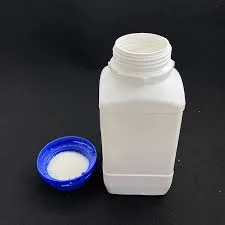Understanding Sodium 3-Chloro-2-Hydroxypropanesulfonate A Comprehensive Overview
Sodium 3-chloro-2-hydroxypropanesulfonate, often referred to in the scientific community by its abbreviated name, is a sulfonate compound that has gained attention due to its various applications in biochemistry, pharmaceuticals, and chemical synthesis. This article aims to delve into the structural characteristics, synthesis, applications, and safety considerations associated with this compound.
Structural Characteristics
At the molecular level, sodium 3-chloro-2-hydroxypropanesulfonate exhibits a unique chemical configuration that combines a sulfonate group with both a chlorine atom and a hydroxyl group attached to a propanesulfonate backbone. The presence of the chlorine atom introduces a level of reactivity, making this compound an attractive intermediate in various chemical reactions. The hydroxy group contributes to its hydrophilicity, enhancing its solubility in water, which is a crucial property for biological applications.
Synthesis
The synthesis of sodium 3-chloro-2-hydroxypropanesulfonate can be achieved through various methods, depending on the desired purity and scale of production. One common approach involves the chlorination of 2-hydroxypropanesulfonate, followed by the neutralization with sodium hydroxide. Catalytic methods are also employed to increase yield and reduce reaction times. The precise conditions can vary significantly, including temperature, pressure, and reaction durations, which must be optimized to ensure maximum efficiency and minimal by-products.
Applications
Sodium 3-chloro-2-hydroxypropanesulfonate has a broad spectrum of applications, particularly in biochemistry and pharmaceuticals
. It is commonly used as a reagent in chemical synthesis, where its unique functional groups allow for various chemical transformations. For instance, this compound can serve as a precursor in the synthesis of biologically active molecules, including drugs and agrochemicals.sodium 3-chloro-2-hydroxypropanesulfonate

Moreover, its role as a surfactant is of particular importance. The surfactant properties of sodium 3-chloro-2-hydroxypropanesulfonate enable it to reduce surface tension, making it valuable in formulations for detergents, household cleaning products, and personal care items. In the context of pharmaceuticals, this compound can facilitate drug solubility and bioavailability, improving the efficacy of therapeutic agents.
Additionally, sodium 3-chloro-2-hydroxypropanesulfonate is also employed in biochemical assays and research. Its selective reactivity allows researchers to label biomolecules or modify surfaces in a controlled manner, providing valuable tools for studying biological systems.
Safety Considerations
While sodium 3-chloro-2-hydroxypropanesulfonate is generally considered to be of low toxicity, it is essential to handle this compound with care, as with all chemical substances. Its chlorine content means that it can react with other compounds under certain conditions, potentially leading to hazardous by-products. Therefore, proper safety protocols should be followed during its use in laboratories and industrial settings.
Appropriate personal protective equipment, such as gloves and goggles, should be worn to prevent skin and eye contact. Additionally, adequate ventilation is necessary when working with this compound to minimize inhalation risks. Proper storage in labeled containers, away from incompatible substances, is also crucial to maintain safety and stability.
Conclusion
Sodium 3-chloro-2-hydroxypropanesulfonate is a versatile compound with significant importance in various fields, including pharmaceuticals, biochemical research, and materials science. Its unique chemical structure and properties enable a wide range of applications, particularly in synthetic processes and formulations. However, while utilizing this compound, one must adhere to safety guidelines to ensure the well-being of laboratory personnel and the integrity of experimental results.
In summary, understanding the properties and applications of sodium 3-chloro-2-hydroxypropanesulfonate can lead to the development of innovative solutions across multiple disciplines, further highlighting the value of this remarkable chemical compound in modern science and industry.

